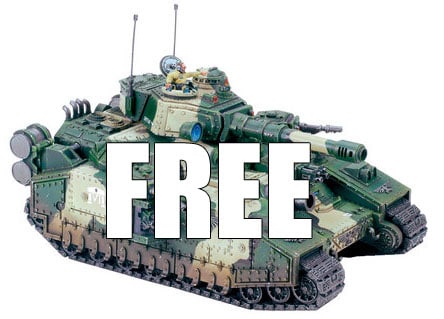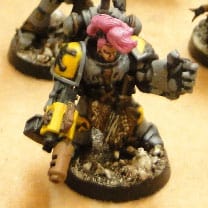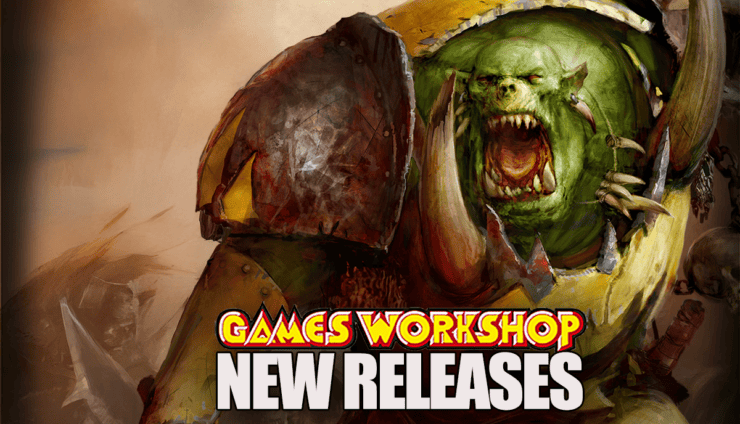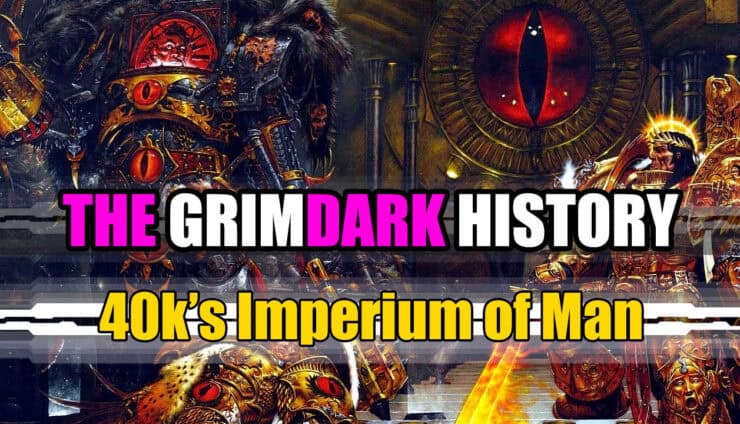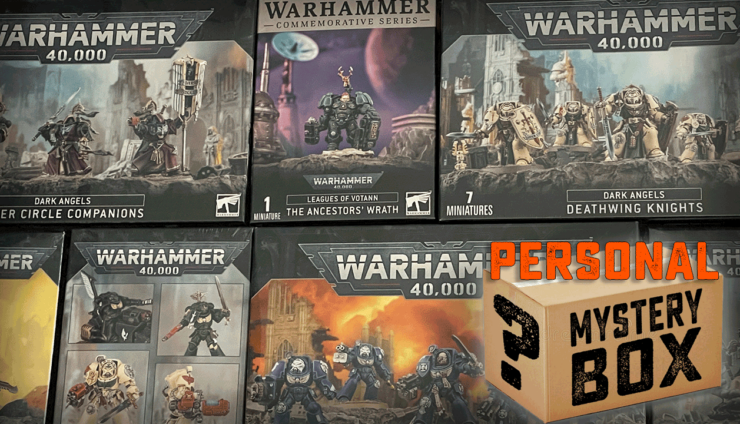So I was surfing around the blog-o-sphere yesterday killing time, and I happened on a very well written article on Hero’s blog about making army lists.
I really agree with most of his points, so I figured the post was so awesome I would share it here.
From Hero’s Blog: What makes a good list? I define a good list as a list that can win battles.
I’ve always viewed games as this: The point of the game is to have fun. The objective of the game is to win. Now since I come from a strong RTS background, there’s only one outcome at the end of the game: You either win, or you don’t. Victory or defeat. Winner or loser. There’s no other way to really play a game with objectives otherwise. Now, I understand that wargaming is all about throwing dice, drinking a few beers and having fun, and I do that. But in the end of the day, you want to see your army victorious on the battlefield. You want to see that one Marine raise that flag ontop the corpses of your enemies. That’s what the gaming aspect of Warhammer is all about.
Now, how do you accomplish that? How do you make a list that can slay your foes, capture objectives and emerge with enough collective bodies at the end of the game to claim victory? There’s a method to that. Below, I will show you my mentality when constructing a competitive army list.
Before we start, these are some qualities that will help you in the long run:
A strong understanding of your army book.
A solid understanding of other army books.
A competitive spirit; the urge to improve; the ability to lose and learn.
Once you’ve got those things down, let’s run through my checklist:
1. Pick a theme for your army.
Do you want shooty, CC or balanced? Let’s look at the balanced 1750 wolf list I have posted before this. It’s a very balanced list; with elements of shooting and CC mixed together. You want to make an army that fits your needs, that you’re happy with and that you enjoy playing. No point looking at some army list on the internet and say.. “Oh! it looks like that’ll win some games, let’s play that!” No no, you don’t want to go down that road. You want an army that defines you and your playstyle. Once that’s decided, you’ll have a much easier time focusing on the specific elements that’ll make your army work. That’s why balanced lists are often harder to construct: You can’t just pick all the CC or all shooty stuff, you have to find a centerpoint where you have points left over for both.
2. Take advantage of your army’s strengths.
You have studied your book well enough that you know what the optimal choices are. Now let’s make those fit into the theme for your army. I know that Grey Hunters are amazing, but what do I want them to do? I need them to hold the line once my opponent gets close enough to me. I need them to be my jack-of-all-trades (which is a common thing you’ll notice in Space Marines), so I configured them for that purpose. Looking at HQs, I need someone who can support my army from afar and up close, so I chose to go with the Rune Priest. If was playing Eldar, I would certain like a Farseer for that purpose as well. Psychic abilities can only help you in battle.. especially against those armies that no protection against it. Now I have my HQ and my Troop choice, I need some shooting. What are the best shooters in my book? Long Fangs. Give them the optimal 5x ML layout and we’re good to go. No need for Heavy Bolters or Plasma Cannons, my 3x packs of Grey Hunters have so many Bolters for a reason. Lastly, I need a CC anvil. Someone that my opponents will rightly fear in combat. I look up (or down rather) to Arjac to fulfill that role.
3. Minimize your army’s weaknesses.
Space Marines are not very a very mobile list generally. They like to stay together and use their weight of power rather than spread out and carry out specialist duties. All elements of your army must have synergy with eachother in order to work properly. I need to make sure none of my army gets separated and that everyone can support eachother if necessary. A vital part of my army does not like to move. That is a weakness in a list that’s otherwise fully mechanized. I need to overcome this weakness via smart deployment or violently force the game’s outcome through sheer weight of power. This is something that Space Marines can do very well and I intend on doing so every chance I get. I intend to do this by letting loose 10 missiles a turn and position my army in a way that’ll eventually lead to close-ranged combat; something that Wolves excel at.
4. Maximize the amount of threat you present on the table.
I like to count up the amount of threats I have on the table in clusters. The Rune Priest in the Grey Hunter pack and the Rhino will be a threat to my opponent. He provides annoying psychic abilities and has the ability to shut down enemy magic on a 4+ (1). My other well-configured Grey Hunter packs will be a threat as well (2). Arjac and his squad of Grey Hunters in the LRC will be two huge threats that my opponent will be wary of (3, 4). The Long Fangs will be a fire base that needs to be silenced, so my opponent will have to deal with those one way or another (5). I have presented 5 key areas of threat on the table and my opponent’s decisions for moving, shooting and assaulting will have to be based on those. The more decisions you force your opponent to make in any given game turn is an important facet in a well constructed list. He shouldn’t ever be doing something without fear of consequence.
5. Stay away from the all-eggs-in-one-basket approach.
By spreading your points across the army evenly in terms of areas of threat, you avoid the deathstar approach that a lot of players tend to do. They throw their uber lord in a unit of expensive Terminators and a Land Raider and that’s all the serious threat they have on the table (because they don’t have points for anything else). 3 threats located in 1 unit is an easy way for a good opponent to make his decisions. Note that this scales directly proportional to how large the game is. At 2K points, this is something you can get away with but at 1750 or 1500, this is not really do-able. For example, Ragnar, 5x WGT in a LRC costs ~740 points. Is it dangerous? Hell yeah. But if you’re playing a 1500 point game, that’s half of your army right there. All of which are not scoring, so where do you get the points for enough mans to reliably hold objectives? This is something to think about when constructing your army list.
Once you get these things down in your list, you should go out and experiment (playtest!) with it. Note the type of game that you’re playing and at what point level. See if your army preforms well at capturing points, obtaining kill points or seizing objectives. Note what the army excels at, what areas it needs improvements in and what you can do to make it better for the next game. Don’t be afraid to lose a game or two, I know I lost my first couple of games with Space Wolves. As long as you learn from your mistakes and improve upon them, you will become a better player. This is a guarantee.
You can find Hero over on his blog (Hero’g Gaming Blog).
He also hearts emails of any kind, and would love to hear from YOU!
Email him at lkhero@gmail.com


